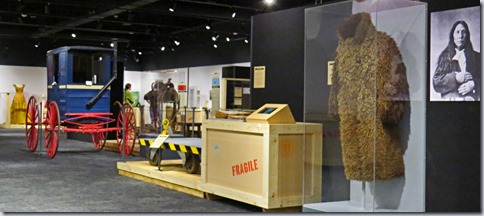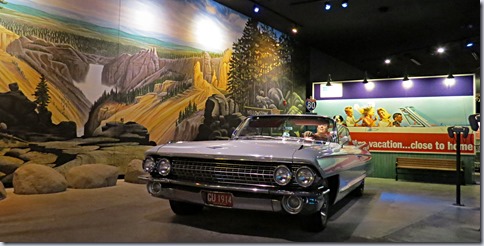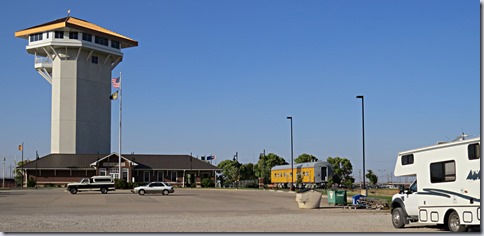
Scotts Bluff rises almost straight up from the surrounding land and is a
remnant of high plains that were eroded away by wind and water over millions of years. A cap of hard limestone protected the bluff. It was an important landmark for the travelers along the Oregon Trail. After weeks of walking along the featureless plains they were now 1/3 of the way to Oregon and were nearing the foothills of the mountain ranges.
During the 1930s young men working for the
Civilian Conservation Corps built a road, from the visitor center to the top of the bluff, which is still in use today. Two short paved trails at the summit lead to overlooks of the valley. There are also three paved trails that start at the visitor center. One, which goes to the top of the bluff, is closed due to a landslide. Another goes to a section of the Oregon Trail wagon ruts. The last connects to another trail, the
Monument Valley Pathway, for six miles total length.



The visitor center has exhibits and two short films.
The visitor center is accessible but the door opens out over sloped concrete making entry a little difficult. The south trail at the summit is accessible. The north trail has two very steep sections and drop offs. The trail to top of the bluff is accessible on the level portion. The trail to the wagon ruts is accessible for the first section but the next section is not paved and is very difficult to push along. The trail to the Monument Valley Pathway does not have a curb cut at the start making it a bit difficult to access.

The parking lot has long RVs spaces. The road to the summit is limited to vehicles under 25’. An accessible
shuttle bus is available.
Watch for another landmark,
Chimney Rock, about 20 miles east of Scotts Bluff.
 Park 41.82791, -103.70682
Park 41.82791, -103.70682



















































